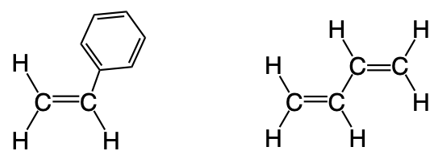Copolymers are a fascinating class of polymers that consist of two or more different types of monomers, distinguishing them from homopolymers, which are made up of a single type of monomer. Understanding the various arrangements of monomers in copolymers is essential for grasping their unique properties and applications.
One type of copolymer is the alternating copolymer, where two monomers alternate in a regular sequence, such as A-B-A-B-A. This predictable pattern allows for specific characteristics in the resulting material. In contrast, a random copolymer features monomers arranged in a random sequence, lacking a discernible pattern, which can lead to varied properties compared to alternating copolymers.
Another important category is the block copolymer, where large blocks of one type of monomer alternate with blocks of another type. For example, a structure might consist of several A's followed by several B's, creating distinct regions within the polymer that can influence its physical properties.
Lastly, the graft copolymer consists of a main chain made of one type of monomer (homopolymer) with branches of another type of monomer grafted onto it. This structure allows for the combination of properties from both the main chain and the branches, enhancing the versatility of the material.
In summary, the arrangement of monomers in copolymers—whether alternating, random, block, or grafted—plays a crucial role in determining their physical and chemical properties, making them valuable in various applications across industries.




